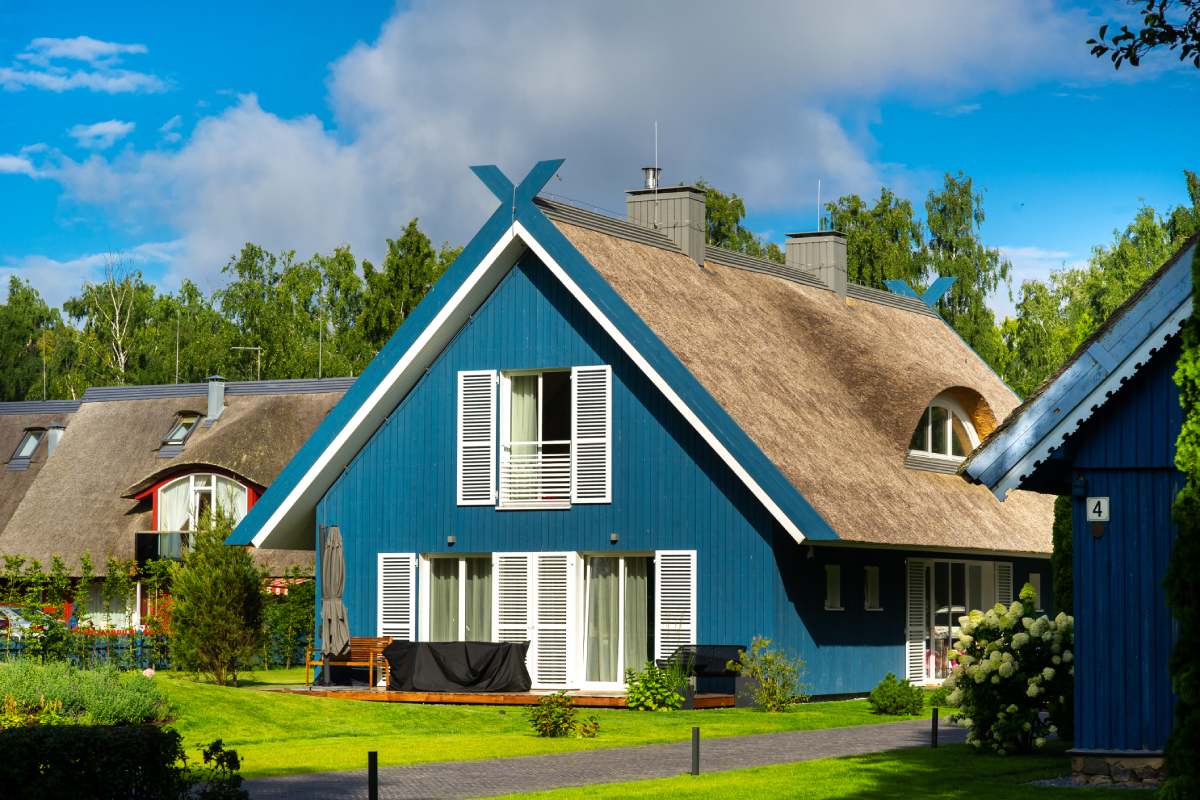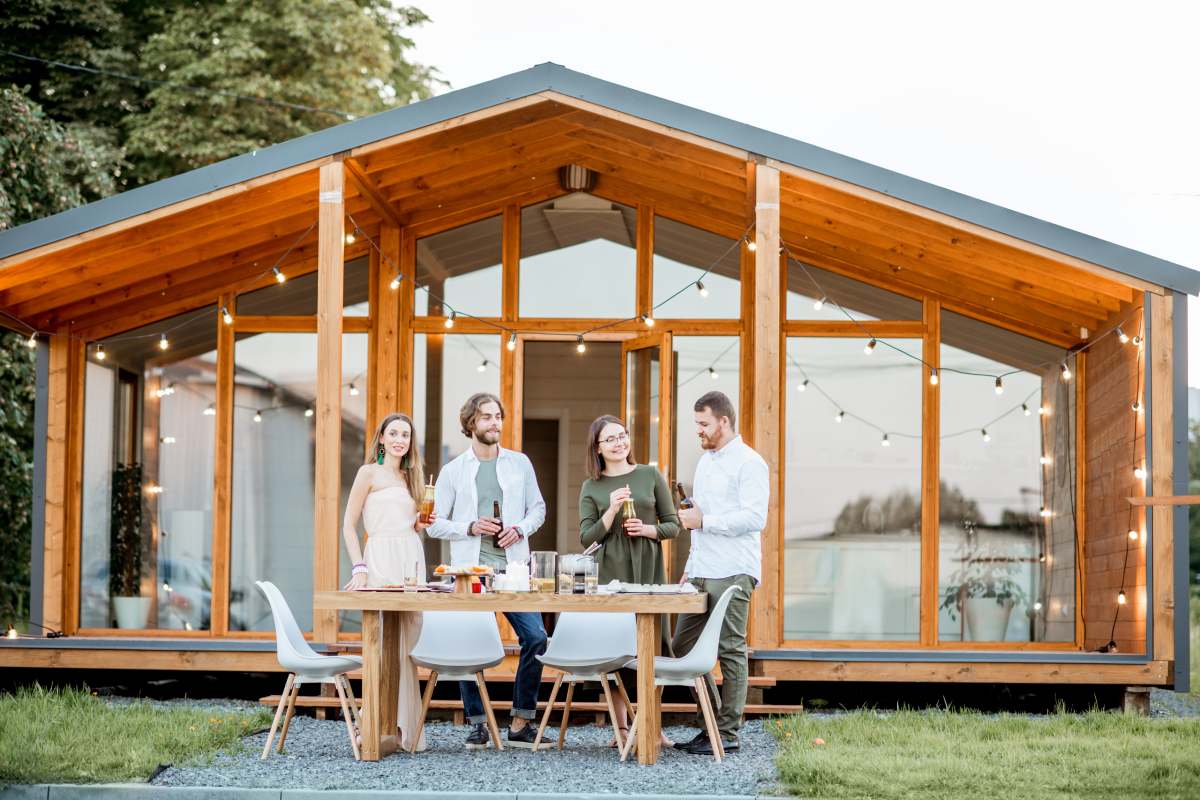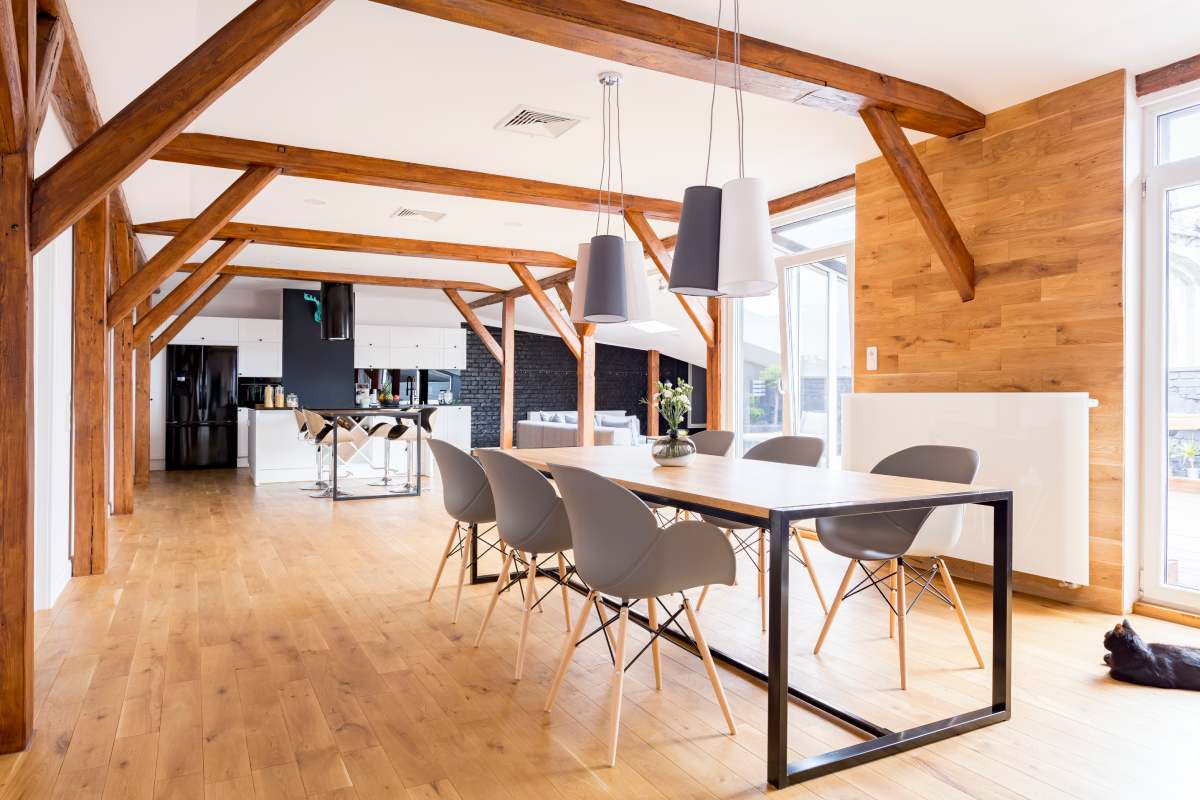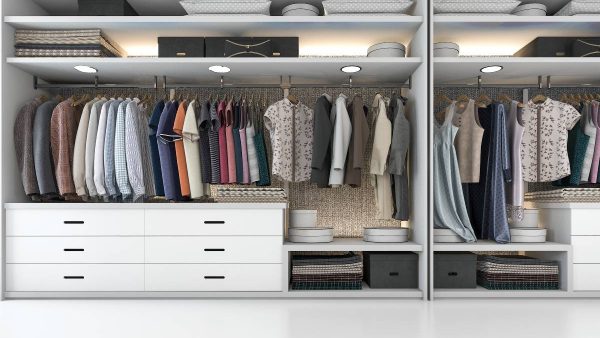When it comes to home design, the Nordic style offers a unique blend of simplicity, functionality, and natural beauty. Originating from the Scandinavian countries of Denmark, Sweden, Norway, and Finland, this design trend is known for its minimalistic approach, cosy textures, and connection to nature.
But if you’re considering adopting this stylish yet serene look for your home in Australia, you might wonder how well it will suit the Australian climate and lifestyle. While Nordic design has many appealing features, it also comes with its own set of challenges when applied to warmer, sunnier environments.
In this article, we’ll explore both the benefits and potential drawbacks of Nordic house style in Australia, providing practical tips for creating a beautiful and functional home that blends Nordic elegance with Australian living.
You might also read:
- What is a walk-in wardrobe? Is it a good idea to have a walk-in wardrobe? Is it expensive to build a walk-in closet?
- What is a transportable home? How much does it cost to move a transportable house in Australia?
What is Nordic house style?
Nordic house style is a design trend that originates from the Scandinavian countries of Denmark, Sweden, Norway, and Finland. It’s all about creating a cosy, functional, and aesthetically pleasing space using simple and natural materials.
If you’re thinking of giving your home a fresh look, understanding Nordic house style could be a great starting point. Here’s a simple guide to what Nordic house style is all about.

Key Features of Nordic House Style
1. Minimalism: One of the hallmarks of Nordic house style is minimalism. This means keeping things simple and avoiding clutter. In a Nordic home, you’ll find clean lines, open spaces, and a focus on essentials. The idea is to create a calm and serene environment, so everything in the room has a purpose.
2. Light and Airy Spaces: Nordic design loves natural light. Big windows and light colours are used to make rooms feel bright and spacious. You might see white walls, light wood floors, and simple curtains that let in plenty of daylight. The goal is to bring the outside in and make the most of the natural light available.
3. Natural Materials: Wood is a big part of Nordic house style. You’ll see a lot of natural wood in floors, furniture, and even wall panels. This ties the indoors to the outdoors and gives a warm, inviting feeling. Other natural materials like stone, wool, and linen are also commonly used.
4. Functional Furniture: Furniture in Nordic homes is not just about looks—it’s also about function. Pieces are designed to be practical and versatile. You might find multi-purpose furniture, like a sofa bed or a coffee table with storage, which helps keep the space organized and efficient.
5. Neutral Colors: The colour palette in Nordic house style is very neutral. Think whites, greys, and beiges. These colours help create a calm and cohesive look throughout the home. Accents like throw pillows or rugs might feature soft, muted tones or subtle patterns.
6. Cozy Textures: Even though the colours and furniture are simple, Nordic homes are all about comfort. You’ll find cosy throws, soft rugs, and plenty of cushions. These textiles add warmth and make the space feel inviting, especially during the long, dark winters.
7. Simple Decor: Decorations in Nordic homes are usually minimal and understated. Instead of lots of knick-knacks, you might see a few well-chosen pieces, like a vase with fresh flowers or a piece of artwork. The idea is to enhance the space without overwhelming it.
8. Nature-Inspired Elements: The Nordic design style draws inspiration from the natural world. You might see plants, natural stone, or wooden accents that reflect the beauty of the outdoors. This connection to nature helps create a peaceful and refreshing atmosphere.
Why Choose Nordic House Style?
Choosing Nordic house style for your home can bring many benefits. It’s perfect for those who enjoy a clean and uncluttered look. The emphasis on natural light and simple decor can make small spaces feel larger and more open. Plus, the focus on functional furniture and cosy textures means you can create a beautiful and practical living environment.
If you’re looking to redecorate or renovate your home, Nordic house style offers a way to create a stylish, serene, and comfortable space. It’s a design approach that balances beauty and function, making it a popular choice for many homeowners.
Is Nordic house style suitable for the Australian climate?
Nordic house style, known for its minimalist aesthetics and focus on natural materials, is often associated with cold, dark Scandinavian winters. But can this style work in the warmer, sunnier Australian climate? Let’s break it down to see how Nordic design can be adapted for an Australian home.
1. Embracing Natural Light
Nordic Style: In Scandinavian countries, Nordic design emphasizes maximizing natural light due to the long, dark winters.
Australian Adaptation: In Australia, where sunshine is more abundant, you can also embrace natural light with large windows and open spaces. Use light curtains or blinds to let the sun in while controlling heat. The same principles of bright, airy spaces work well in sunny environments to create a cheerful, open feel.
2. Natural Materials and Ventilation
Nordic Style: Nordic homes use natural materials like wood, which offer warmth and a cosy feel.
Australian Adaptation: Wood can still be a great choice in Australia, but consider materials that handle heat better. Light-coloured woods can reflect sunlight and keep rooms cooler. Ensure good ventilation with ceiling fans or open windows to keep air moving and manage heat. The natural materials in Nordic design can be complemented by outdoor spaces like decks or patios for enjoying the outdoors.
3. Simple and Functional Furniture
Nordic Style: Furniture in Nordic homes is minimal, functional, and often multi-purpose.
Australian Adaptation: This aspect of Nordic design is highly adaptable. Australian homes benefit from multifunctional furniture, especially in smaller spaces. Choose pieces that are easy to maintain and can handle the wear and tear of a more casual lifestyle. Outdoor furniture can also follow the Nordic principle of simplicity and functionality.
4. Neutral Colors and Cool Interiors
Nordic Style: The Nordic palette features neutral colours and cool tones to brighten dark spaces.
Australian Adaptation: In Australia, you might want to opt for a slightly warmer colour scheme. While white and grey are still great choices, you can incorporate warmer shades like beige, soft greens, or blues to reflect the sunny Australian environment. Lighter shades of natural materials can keep your home cool and comfortable.
5. Cozy Textures and Comfort
Nordic Style: Nordic homes focus on creating cosy spaces with warm textiles and soft textures.
Australian Adaptation: You can still achieve cosiness in an Australian home with light, breathable fabrics. Opt for natural fibres like cotton or linen for cushions, throws, and rugs. In summer, lighter textures keep things cool, while in winter, heavier textiles like wool can add warmth and comfort.
6. Nature-Inspired Decor
Nordic Style: Nature plays a big role in Nordic design through the use of natural materials and outdoor elements.
Australian Adaptation: You can integrate Australian flora and natural elements into your decor. Indoor plants like succulents or ferns can bring a touch of greenery. Outdoor living spaces can also reflect Nordic simplicity, using natural stone or wood elements to create relaxing areas.
7. Sustainability
Nordic Style: Nordic design often emphasizes eco-friendliness and sustainability.
Australian Adaptation: This aspect of Nordic style fits well with Australian values. You can focus on eco-friendly materials and energy-efficient designs. Consider sustainable options like solar panels, rainwater harvesting systems, and energy-efficient appliances.
Practical Tips for Adapting Nordic Design to Australian Homes
- Window Treatments: Use shades that block excessive heat but still let in light.
- Materials: Choose light-coloured, heat-resistant materials for flooring and furniture.
- Ventilation: Incorporate ceiling fans or open windows to maintain airflow.
- Colour Schemes: Opt for warm neutrals and integrate the outdoors into your design.
- Outdoor Spaces: Create comfortable and functional outdoor living areas.
Cons of Adopting Nordic-Style for Your House in Australia
While Nordic house style offers a lot of benefits, it’s important to be aware of potential challenges when applying this design trend to an Australian home. Here are some cons to consider, along with tips on how to address them:
1. Climate Adaptation Challenges
Con: Nordic style is designed for cold climates with long winters, so some of its features might not be suitable for Australia’s warmer climate.
Solution: Adapt the style by focusing on light, breathable materials and maximizing natural ventilation. Use lighter textiles and avoid heavy wool rugs and throws that are better suited for colder weather. Also, consider adding ceiling fans or installing good window shading to manage heat.
2. High Maintenance of Natural Materials
Con: Nordic design emphasizes natural materials like wood, which can require significant upkeep, especially in a climate with high humidity or salt in the air.
Solution: Choose durable, low-maintenance materials. For example, opt for treated wood or wood-look alternatives for flooring and furniture. Regular maintenance, such as cleaning and protecting finishes, will help preserve the natural materials.
3. Potential for Over-Simplicity
Con: The minimalist nature of Nordic design can sometimes feel too stark or impersonal if not executed carefully.
Solution: Balance minimalism with cosy elements. Add comfort with textiles, like light throw blankets and cushions. Incorporate personal touches through artwork, plants, or decorative objects that bring warmth and personality to the space.
4. Limited Colour Options
Con: Nordic design relies heavily on a neutral colour palette, which might feel monotonous or bland for those who prefer more vibrant colours.
Solution: Introduce subtle pops of colour through accessories like cushions, rugs, or artwork. You can also use nature-inspired colours, like soft greens or blues, which fit both the Nordic aesthetic and the Australian environment.
5. Cost of Authentic Scandinavian Furniture
Con: Authentic Scandinavian furniture and decor can be expensive due to import costs and high-end brands.
Solution: Look for local alternatives that offer a similar aesthetic. Many Australian furniture stores and online retailers offer minimalist, functional designs at more affordable prices. You can also explore second-hand options or DIY projects for budget-friendly choices.
6. Space Constraints
Con: Nordic design often emphasizes spacious, open-plan layouts, which might be challenging to achieve in smaller Australian homes.
Solution: Focus on maximizing the space you have. Use multifunctional furniture, keep decorations minimal, and choose light, airy colours to make the space feel larger. Clever storage solutions and decluttering can also help optimize smaller areas.
7. Seasonal Comfort
Con: Nordic design emphasizes cosy spaces for cold weather, which might not align with the warm, sunny Australian seasons.
Solution: Design for seasonal flexibility. Incorporate elements that can be easily swapped out for different seasons, like lightweight blankets for summer and heavier ones for winter. Create outdoor living spaces that can be enjoyed year-round.
8. Potential for Over-Emphasis on Design Trends
Con: Following design trends too closely can lead to a home that feels more like a showroom than a comfortable living space.
Solution: Personalize the Nordic style to fit your own preferences and lifestyle. Choose elements that you love and that work well for your daily life, rather than adhering strictly to trend-based designs.
9. Incompatibility with Existing Home Features
Con: If your home already has architectural features that don’t align with Nordic design, it might require significant modifications.
Solution: Embrace the existing features and find ways to blend them with Nordic elements. For example, if you have traditional features, you can integrate Nordic style through accessories, colours, and furnishings rather than a complete overhaul.
10. Cultural Misalignment
Con: Nordic design is rooted in Scandinavian culture, which might feel disconnected from Australian lifestyle and culture.
Solution: Adapt the principles of Nordic design to fit Australian life. Combine Nordic simplicity with Australian elements, such as local art or native plants, to create a space that respects both design traditions.
Final thought
Nordic house style can bring a touch of Scandinavian charm to your Australian home, offering a blend of minimalism, natural beauty, and functionality. By addressing the challenges and adapting the design to suit Australia’s climate and lifestyle, you can create a space that is both beautiful and practical. Embrace the principles of Nordic design to craft a home that is serene, stylish, and uniquely yours.





